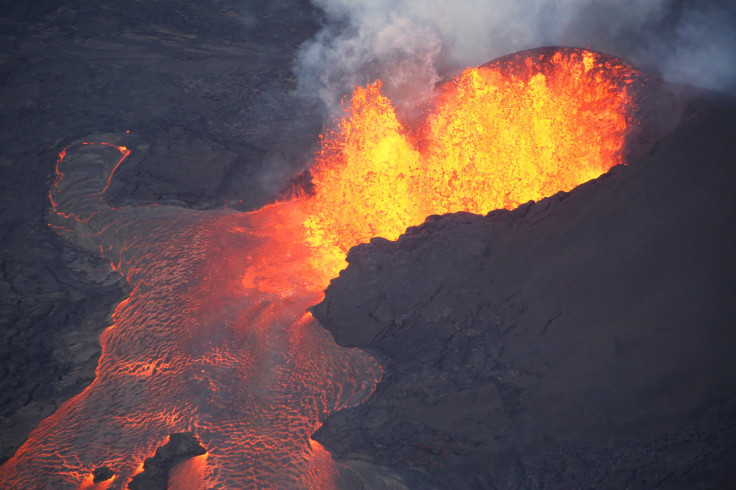VIDEO: Watch Hawaii Volcano's Ongoing Eruption, Area On Red Alert
KEY POINTS
- The Kilauea volcano erupted late Sunday, sending fountains of lava into the air and triggering an earthquake
- The eruption hasn't yet shown the same home-engulfing strength as 2018's
- Officials are keeping a close eye on the situation as it progresses
The Kilauea volcano erupted late Sunday, sending lava spewing 165 feet above Hawaii’s Big Island. The area was put on a red alert Monday morning.
The National Weather Service in Honolulu issued an advisory warning for residents to stay indoors to avoid exposure to ash.
The eruption sent clouds of steam into the air and triggered an earthquake but hasn’t yet shown the same destructive force as the last eruption, which buried sections of the island under a wave of lava.
Live cameras from the Parks Service can be found here.
Photographer Ken Boyer (@kenboyerphoto) broadcasting live on Facebook from Kīlauea overlook, answering questions from viewers around the world. Earlier scenes captured explosions as the water lake in the crater vaporized. #kilauea #volcano #hawaii pic.twitter.com/zXInpCdiMM
— Ryan Kawailani Ozawa (@hawaii) December 21, 2020
The eruption began Sunday night when a new lava flow encountered water pooled in the volcano’s crater, creating a pillar of steam that rose 30,000 feet. Tom Birchard, a senior forecaster for the National Weather Service, characterized the initial eruption as short-lived but vigorous in a statement to the Associated Press.

Despite the height, the cloud only triggered an advisory for eye and lung irritation from excessive ash. Honolulu’s National Weather Service branch declared shortly after that the eruption had died down.
By 1 a.m. local time, however, the U.S. Geological Survey had recorded lava fountains up to 165 feet high followed by a 4.4 magnitude earthquake. Over 500 people felt the quake, but there was no damage reported.
David Phillips, a spokesman for the Hawaiian Volcano Observatory, said they were keeping a close eye on the eruption.
“We will send out further notifications on Kilauea and other Hawaiian volcanoes as we observe changes,” he said.
Kilauea’s last eruption was in May 2018. It buried over 700 homes under a tide of lava over four months. By its end, an area half the size of Manhattan was covered by 80 feet of hardened lava.





















